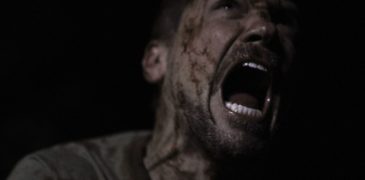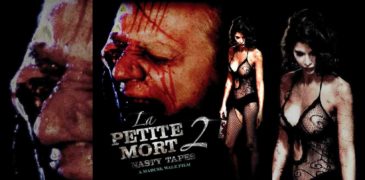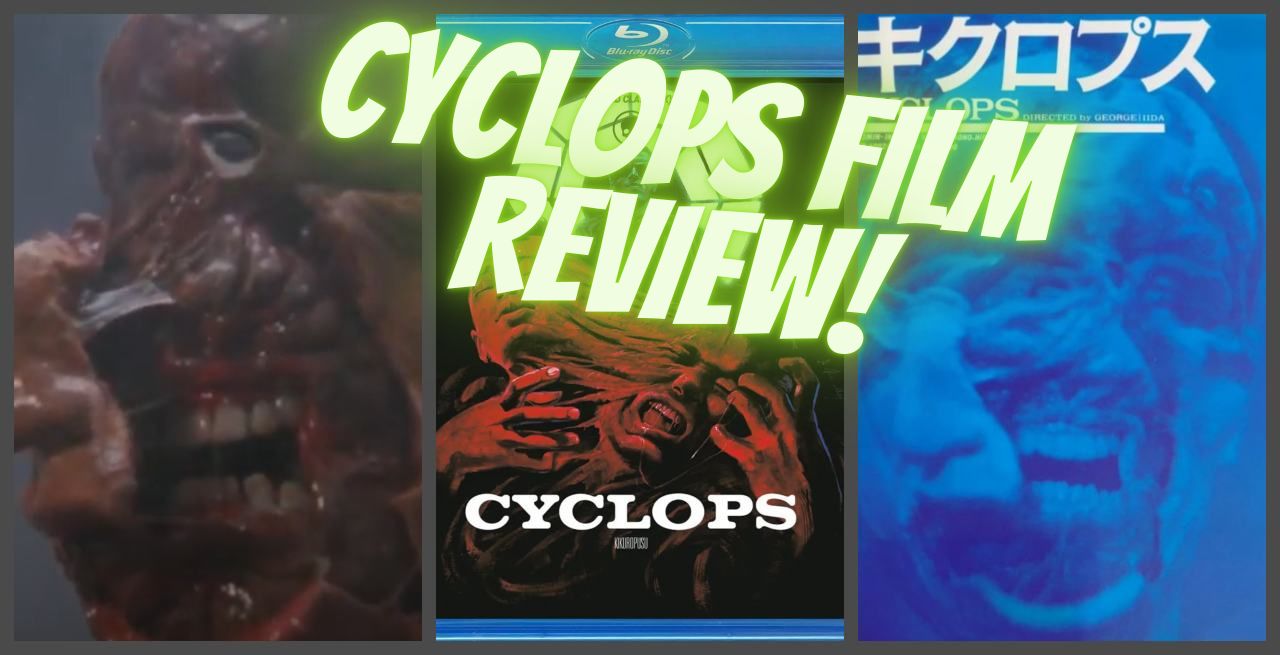
While the 1980s was a fairly lacklustre era for Japanese genre cinema on the major studio front, it was quite an exciting time on the independent scene. A whole new generation of filmmakers — emboldened by available 16mm cameras (the novel home video distribution format) and a robust economy — burst onto the scene, pushing the envelope with bold new vision that completely circumvented the studio system. Many of these filmmakers who cut their teeth this way went on to major-league careers, but for a few — such as Shinya Tsukamoto, Macoto Tezka, or Shinji Higuchi — even their early independent titles obtained cult followings.
One such director is George Iida, best known in the west for directing the likes of Rasen, Dragon Head, and Another Heaven, but I find his early career to be more inspiring: writing the very first (oft-overlooked) movie adaptation of The Ring, kicking off the entire oeuvre of late-night tokusatsu dramas with Night Head, and directing the criminally under-recognized killer kotatsu flick Battle Heater. One of the chief examples of his woefully overlooked filmography, Iida’s debut was an obscure body horror flick titled Cyclops (AKA The Unborn), which certainly belongs in the discussion with the likes of Tsukamoto’s Tetsuo, Nishimura’s Anatomia Extinction (reviewed by us here), and Yamamoto’s Meatball Machine (also reviewed here), predating them all yet ultimately not leading to multifilm franchises like they did.
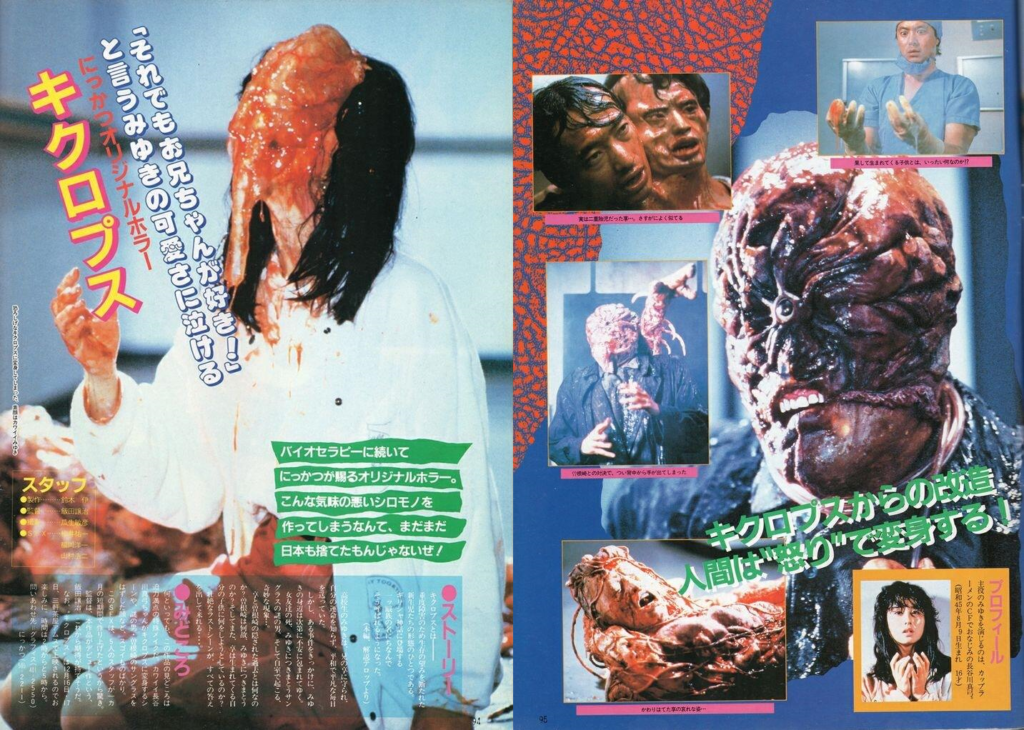
The plot, as these things often are, is slightly convoluted and inscrutable, but the brisk 51-minute film follows Miyuki (Mayumi Hasegawa), a regular schoolgirl living with her weird brother Takamori (Kazuhiro Sano), who studies “cyclopes”, mutations and birth defects brought about by pollution…and he also has a pregnant wife. Takamori and his sketchy colleagues spend most of the film doing illicit heretical research on unwilling participants, and one of his gang, a weirdo dressed in a trench coat with huge, opaque sunglasses (Kai Ato) also seems to have a fixation on Miyuki. If you’re thinking that one or more of these characters might be revealed as closet mutants by the end of the picture, you’re on the right track.
The narrative is less important than the vibe, and in this case, there’s a combination of creeping dread (lots of foreboding shots of our sunglasses-clad stranger) with 1980s urban grime, accentuated by the 16mm photography and a thumping industrial score from Unio Misitca. Indeed, Cyclops is feeding on the same zeitgeist as Tetsuo, even having similar frenetic fast-paced “zoom through the street” shots (though not in the same level of ubiquity), and the culmination is a spectacular body horror battle between two rapidly-evolving amorphous former humans, with additional limbs (and heads) sprouting to splendidly gooey effect. One has to wonder if Shinya Tsukamoto had seen the film when developing his most famous character, Tetsuo, which debuted three years after.
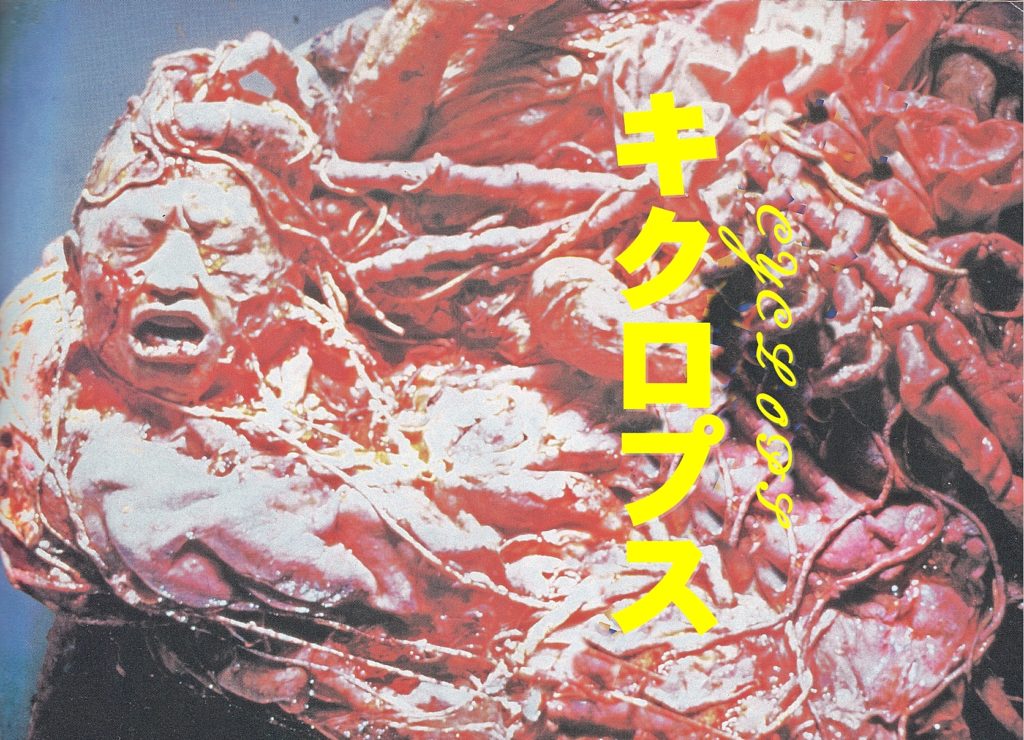
Iida aside, Cyclops has a fairly decent pedigree behind the scenes. Animator Koji Yamamura notably went on to two Academy Award nominations for short films, but others to jump start careers on the production include Shuichi Kokumai (SFX on Keita Amemiya’s Kamen Rider films), Yuichi Matsui (who had started the same year on makeup with the similarly indie Death Power, but went on to big studio productions like Terra Formars) and Yutaka Suzuki (effects on Godzilla vs Mechagodzilla 2 and Orochi the Eight-headed Dragon). While not exactly household names, these technicians advanced to bigger and better things in the industry, and the wild creature effects in this picture probably served as a decent calling card. For what it’s worth, though, there’s plenty of charm to be had in the ingenuity and general rawness of what you see presented here, and that’s an aspect that the more lavishly polished studio pictures can’t replicate.
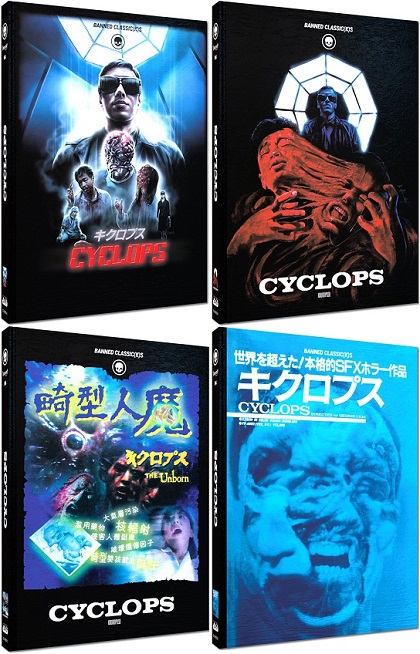
As previously mentioned, the movie went straight to VHS in Japan, had a Hong Kong LaserDisc release, and has generally remained obscure since; on Letterboxd, most reviews are courtesy of people who viewed a VHS rip on YouTube with dodgy automatically-generated English subtitles (disclaimer: this is not a viable way to attain any coherent translation). Fortunately, Cinestrange has recently issued the film on a gorgeous Blu-ray transfer with not only German subtitle and dub options, but English subtitles as well. Strangevice and Medienversand currently have stock for those interested, but I originally purchased the title from Diabolik (OOS).What’s more, the interview with Iida in the bonus features was conducted in English. So, aside from the German audio commentary, it’s a very English-friendly release. Highly recommended for fans of the gory vaporwave period of direct-to-video Japanese monster horror.

More Film Reviews
IN THE BEGINNING In 1984, Ghostbusters was the first film I was allowed to see in the theatre without my mother. My friends and I sat close to the screen,… Island of Death (Ta Paidia Tou Diavolou) is a 1976 exploitation horror film written and directed by Nico Mastorakis. Most notable as the founder and owner of independent film studio… “The relationship between the Dolans and the Lomacks turns sour when one of them leases their land to a natural gas company. The drilling has disastrous results as it unleashes… This dystopian sci-fi centers on a family at the very edge of the human frontier: Mars. The mother, father, daughter trio seem to live a Utopian existence until the outside… Looking to make some extra cash, Dom is pressured into smuggling drugs over the border. With his friend and aspiring gay porn star Benjamin along for the journey, the night… La Petite Mort II: Nasty Tapes is a 2014 splatter horror film, written and directed by Marcel Walz with additional writing from Annika Strauss. The film is a continuation of…Ghostbusters: Afterlife – Film Review from a Nostalgic Fan
Island of Death (1976) Film Review – Horror on Mykonos Island
Unearth (2021) Film Review – Fracking Despair
Settlers (2021) Film Review – What Would You Do in Order to Survive?
Swallowed (2022) Film Review – Don’t Worry, It is Worse Coming Out Than it is Going In
La Petite Mort II: Nasty Tapes (2014) Film Review – Return to Maison de la Petite Mort

A lifelong Japanese genre fiction fan, Kevin is the primary writer for the Maser Patrol blog. He also authored the book Kaiju for Hipsters: 101 Alternative Giant Monster Movies, is a frequent guest host on the Kaiju Transmissions podcast, and occasionally contributes to home video liner notes for tokusatsu releases. TLDR: he really likes talking about monsters.


